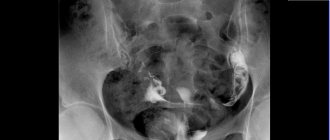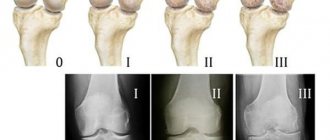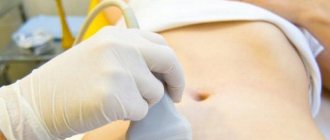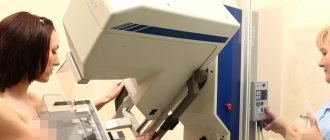HSG stands for hysterosalpingography . This is a procedure in the field of gynecology, which is used in infertility patients to study the patency of the fallopian tubes.
- Methods for determining pipe patency
- Types of procedure
- Progress of the operation
- Pain during HSG
- Contraindications
- Preparation
- results
- Consequences
The fallopian tubes are canals that are 10 centimeters long and only 0.1 to 1 cm in diameter. They begin in the uterus and “strive” to the ovaries. Along them, the egg, which has merged with the sperm, moves into the uterine cavity. If the tubes are obstructed, then conception cannot take place, making natural pregnancy impossible.
The pipes may be partially obstructed. Then an ectopic pregnancy occurs. This means that the fertilized egg cannot freely pass through the tube and is attached to it, beginning to develop there. This condition requires urgent surgery because it threatens the health and life of the patient.
Methods for determining pipe patency
Current methods for determining the patency of the fallopian tubes are:
- Diagnostic laparoscopy
- Fertiloscopy and transvaginal hydrolaparoscopy
- Ultrasound hydrosonography, echohysterosalpingoscopy
- GHA
Hysterosalpingoscopy is carried out by introducing contrast and performing X-ray, and then analyzing the information by a doctor. Most contrast agents contain iodine. They have a low toxic effect when interacting with the radiation of an X-ray machine.
Informativeness of hysterosalpingography in comparison with other research methods
The sensitivity and specificity of research methods (hysterosalpingography (HSG of tubes, HSG of fallopian tubes) and hysterosalpingosonography) are approximately the same and amount to about 80% according to data from a number of foreign authors and our own research results. However, their information content, of course, is not 100% - which is recorded when using laparoscopy.
Thus, both methods are highly sensitive and, if the result is negative, can definitely exclude the disease. That is, in the case of patent fallopian tubes, the information content of the methods is quite high and practically gives a complete answer to the question posed when diagnosing infertility.
If the result is positive, the probability of tubal obstruction is above 70%. That is, if during research we receive results indicating that the tubes are not “ideal,” then most likely there is a “tubal-peritoneal factor of infertility.”
The presence of false-negative results is most likely associated with spasm of the isthmic section of the fallopian tubes, or with a violation of the technique of performing this study. The specificity of the methods increases significantly and reaches 90% in the case of bilateral distal occlusion of the fallopian tubes (that is, in the presence of hydrosalpinxes).
The HSG technique allows us to assume the presence of peritubar adhesions based on the use of a number of diagnostic criteria:
- “atypical tube location” is a symptom in which the fallopian tube is located not horizontally, but vertically;
- pronounced “tortuosity” of the fallopian tube – “convulation”;
- the presence of a “corolla” effect around the fallopian tube – “double contour”;
- the absence of spreading of the contrast agent as the fallopian tube exits and its accumulation in the fimbrial region - “loculation”.
Arrow – accumulation of contrast agent. Symptom of "loculation"
Types of procedure
- USGSS (ultrasound HSG/sonographic)
This is an ultrasound diagnosis in which saline, furatsilin or glucose solution is injected into the uterus. This method is considered low-informative. In addition, only one specialist can perform an examination at a time. No pictures are taken, so other doctors cannot see the picture.
Advantages of USGS: speed, minimal pain, minimal invasiveness, no radiation exposure.
- X-ray GSGGGSG
Verografin, Urotrast or Urografin is injected into the patient's uterus through a catheter, and then a series of x-rays are taken. Advantages of the procedure: the ability to be studied by other specialists, the ability to compare images over time, unlike USGSS.
Disadvantages of the method: irradiation of the woman, the likelihood of exacerbation of inflammation in the appendages, pain during and after X-ray X-ray HSG. Although the radiation is not so strong, a woman is not advised to conceive a child during this menstrual cycle, because it may have developmental abnormalities.
Progress of the operation
First, the patient is examined by a gynecologist using mirrors, then local anesthesia is performed. Then they take a cannula (this is a small tube) and insert it into the patient’s cervix. The specialist takes a syringe and injects a contrast agent through the cannula, which blocks the X-ray radiation.
The contrast fills the uterus and enters the tubes. The doctor takes from 4 to 6 x-rays. Then the cannula is removed from the neck. Over time, the contrast agent is absorbed into the blood and removed naturally.
Hysterosalpingography: how is it performed?
Anesthesia is not required during the procedure. The procedure is painless; there may be a slight feeling of heaviness in the lower abdomen when a contrast agent is administered. When using X-rays, the radiation is minimal.
Before taking the picture, the doctor inserts a special tube into the uterus through which the solution is delivered. The image makes it possible to assess the condition of the uterus and the location of the fallopian tubes. The procedure takes on average 35-45 minutes.
In some cases, there may be bleeding for a week. Then the doctor may recommend medications to prevent inflammation. You can learn more about how hysterosalpingography is done from your doctor.
Pain during HSG
Many people are interested in the question of whether it is painful or not to perform HSG of the fallopian tubes. During the procedure, pain is possible, so the doctor administers lidocaine in advance. This is a drug that has a local anesthetic effect. That is, there will be no general anesthesia.
After HSG, there may be aching pain in the lower abdomen for 2-4 days. The pain may be mild, moderate or severe. It depends on the patient’s pain threshold, the condition of her appendages and her uterus. In some cases, even with good local anesthesia, patients feel pain when contrast is injected before taking pictures. After the procedure, their stomach also hurts.
In some cases, abdominal pain may be tolerable and does not cause much discomfort. Moreover, these sensations are stronger when the liquid is administered through a syringe and cannula, and half an hour after the procedure the pain disappears.
After hysterosalpingography (HSG)
Immediately after hysterosalpingography, minor pain may be felt, which goes away on its own. There may be bloody vaginal discharge for 5-7 days (you will need to use sanitary pads. You will need such a pad immediately after the procedure).
If after hysterosalpingography the temperature rises, or vaginal discharge is profuse (you have to change pads frequently), or severe pain in the abdominal area is observed, you should definitely consult a doctor.
Contraindications
Doctors (and patients themselves) definitely need to know when not to do hysterosalpingography, that is, GHA.
- pregnancy
Before the HSG, the patient is given a pregnancy test to be sure that a fetus is not developing in her body.
- allergy to contrast
The patient may have an allergic reaction to medications that contain iodine. Other active substances with unstable electrons are more toxic and can significantly harm humans.
- any inflammation of the cervix, vagina or appendages
Chronic infection may become active after the procedure, which is explained by the effect of the contrast agent. For this reason, an examination by a gynecologist and a vaginal smear are prescribed. Tests will show how healthy the flora is in the patient’s vagina and whether there is inflammation.
Preparation
You should know the rules for preparing for HSG, and on what day the procedure is carried out. The preparation is quite simple:
- do not have sex 2 days before HSG
- 7 days before the procedure, stop using intimate hygiene products and douching
- 7 days before HSG, do not use suppositories, vaginal suppositories or tablets, or tampons (switch to pads)
HSG of the fallopian tubes is done after the critical days (within 14 days from the end). The reason is that the uterine mucosa is thin during this period, does not block the entrance to the tubes, and the woman cannot yet be pregnant.
What will happen during the test procedure, and will it hurt me?
To perform hysterosalpingography, the woman is placed on a chair resembling a classic gynecological one. The cervix is dilated using a speculum, after which a thin catheter is installed into the lumen of the cervical canal. Next, the chair with the patient is moved using wheels under a special X-ray machine - a fluoroscope with a camera. After this, a special contrast liquid is pumped into the cavity of the uterus and fallopian tubes through a catheter, moderately stretching the walls of the organs, after which photographs are taken. The resulting material (photographs) is saved in printed or digital format. The whole procedure will take no more than 30 minutes. If visualization is insufficient, the examination is repeated 30 minutes after the first one.
Hysterosalpingography procedure
During fluid administration, the woman experiences discomfort and cramping pain in the lower abdomen, which often frightens patients preparing for HSG. However, the pain passes quickly and is moderate in nature, but the results give a clear picture of the condition of the female organs, becoming the basis for the diagnosis and proper treatment of infertility.
results
X-rays, if there are no adhesions, show the uterus, which has fluid, tubes and contrast that leaks into the abdominal cavity. The image allows the specialist to assess how passable the patient’s fallopian tubes are.
Sometimes the contrast “slows down” in a certain section of the pipe, which indicates an obstruction. HSG also detects adhesions in the uterus, adhesions outside the tube, hydrosalpinx, fibroids and polyps, if present. If HSG is performed successfully, the results may still be inaccurate.
The effectiveness of the procedure is 65 percent, and the specificity is 80 percent. The last indicator means identifying a specific disease from among the possible ones. To check the uterine cavity, patients also undergo hysteroscopy.
Indications
This diagnostic method is chosen by gynecologists for patients with suspicion and to identify various diseases and pathological changes in the uterine cavity.
Tubal obstruction
Pathology is one of the causes of infertility and occurs if there are congenital or acquired ailments in the anatomy of the tubes (after surgery or functional disorders).
Isthmic-cervical insufficiency - expansion of the cervical canal and its internal os to 5-7 mm
Premature pathological dilation of the cervix, causing spontaneous abortion or premature birth. ICI occurs with congenital malformations of the uterus, injuries received during childbirth, after surgery, with hormonal disorders, etc.
Anomalies of the development of the uterus and appendages
Anomalies and malformations of the uterus include any changes in shape, location, size, etc. Their presence leads to disruptions in the reproductive system and various functional disorders. Without treatment, problems can lead to infertility, pregnancy complications, and miscarriage. Most often, illnesses occur without symptoms, so a high-quality diagnosis is needed.
Submucous fibroids or synechiae (adhesions in the uterine cavity)
Myomas, synechiae and other intrauterine pathologies are often diagnosed as a whole group in one patient (almost all age groups). Pathologies have similar symptoms and require an integrated approach to diagnosis and treatment.
Adenomyosis, endometrioid cancer, polyps, genital tuberculosis
Various lesions of the uterine mucosa are usually associated with infectious or viral diseases, hormonal disorders, inflammation, etc. and serve as signals of serious problems in the female body. Polyps arise and develop against the background of pathologies such as cervicitis or cervical erosion. Adenomyosis affects other tissues of the uterus. Genital tuberculosis leads to cycle disorders, intoxication, infertility, etc.
Consequences
HSG is a safe procedure. Basically there are no complications or consequences. In rare cases, patients develop a severe allergy to the injected contrast. It is necessary to carefully check for allergies those who are prone to allergic manifestations and those who have bronchial asthma.
In rare cases, the procedure is unsuccessful. This happens if the doctor does not have enough experience. It can puncture the uterus, causing bleeding.
If there is a chronic infection, as noted above, a resumption of the process and symptoms may occur. Inflammation of the appendages and endometritis are likely, but such cases are rare.










